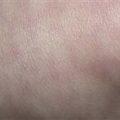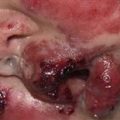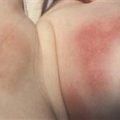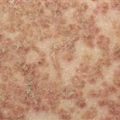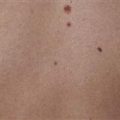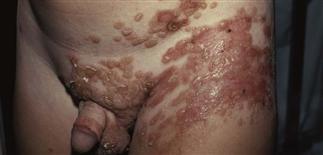
Sausage-shaped tense bullae and crusted lesions in a toddler with linear IgA dermatosis.
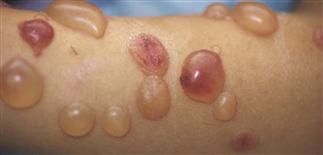
Tense blisters on the arm in a child with linear IgA dermatosis.
CLINICAL FEATURES
Linear IgA dermatosis is a heterogeneous autoimmune disorder with antibodies targeting multiple antigens. The most common antigens are LABD97 and LAD-1 which are degradation products of BP 180 (type 17 collagen). It may also be drug-induced, usually by vancomycin. Biopsy of perilesional skin with immunofluorescence evaluation reveals linear IgA deposition at the basement membrane. The blisters of linear IgA dermatosis are characteristically sausage shaped, grouped in an annular or rosette-like fashion around a central crust and occur most commonly in the inguinal area. Multiple tense blisters, some with hemorrhage, may be seen. Toddlers are usually affected. Pruritus may be absent or very intense.
TREATMENT
Linear IgA usually responds promptly to dapsone 0.5 to 2.0 mg/day. Oral methylprednisone, mycophenolate mofetil, and erythromycin may be used in cases unresponsive to dapsone. Improvement with dapsone is usually seen within a few weeks. Once clear, linear IgA dermatosis is unlikely to recur. The usual course is 2−4 years.


